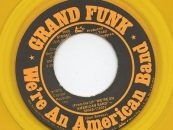For many fans of rock music, before the days of the Internet, music reference books were the primary source of information. And among the most essential was Irwin Stambler’s The Encyclopedia of Pop, Rock and Soul. Originally published in 1974 and subsequently revised a number of times, the single-volume book—which grew to nearly 900 pages by its 1989 edition—was one of the most comprehensive and reliable sources of information on the music.
Stambler—who also wrote The Encyclopedia of Popular Music; The Encyclopedia of Folk, Country & Western Music; Country Music: The Encyclopedia; Folk and Blues: The Encyclopedia (with his son Lyndon) and books on aeronautics, space travel, automobiles, sports and other topics—died Feb. 10 in Los Angeles. The cause was complications of sepsis, according to Lyndon. Stambler was 92.
As the obituary of Stambler in The New York Times pointed out, The Encyclopedia of Pop, Rock and Soul was not the first rock encyclopedia, but it was the first of such breadth and detail. Some entries, even for marginal figures, went on for pages, with many taking up several hundred words or more. An average entry began with the artist’s vitals—birthdate and place—and then went into a lengthy explanation of who that artist was within the context of rock history, with detailed discographical information provided. The entry on British singer-guitarist Dave Edmunds, for example, took up nearly two small-print pages, explaining first that Edmunds was something of a revivalist of the early rock ’n’ roll sound, then painstakingly detailing his history in the band Love Sculpture before moving into his solo years and time with the band Rockpile.
Stambler’s choices on which artists to include and not include might have seemed questionable to some. Did one-hit wonders Jimmy Gilmer and the Fireballs (of 1963 hit “Sugar Shack” fame) really deserve as much space as Motown founder Berry Gordy Jr., who follows Gilmer in the book, or Jimi Hendrix? Some early but important pop stars, like Pat Boone, are omitted from the book altogether, while some ’70s/’80s artists whose influence today is negligible (Spandau Ballet) are accorded full-length bios. R&B singers Dinah Washington and Esther Phillips are given entries, presumably because they landed on the pop charts, whereas Sarah Vaughan and Nina Simone are not. Albert and B.B. King make the cut, but not fellow blues guitarist Freddie King.
Despite its inconsistencies—Stambler did, of course, have limited space—he was an important early chronicler of rock/pop history who, according to his son, took his research very seriously, even attending rock concerts (including punk) to better get a feel for the artists he was covering.
Stambler was born Nov. 20, 1924, and grew up in Brooklyn. He earned bachelor and master’s degree in aeronautical engineering at NYU and wrote for Space Aeronautics Magazine, as well as books on aviation and the space program, before turning his attention to music. His first book on the subject, The Encyclopedia of Popular Music, published in 1965, dealt primarily with Broadway musical. Then came rock.
If you’re a new Best Classic Bands reader, we’d be grateful if you would Like our Facebook page and/or bookmark our Home page.








No Comments so far
Jump into a conversationNo Comments Yet!
You can be the one to start a conversation.